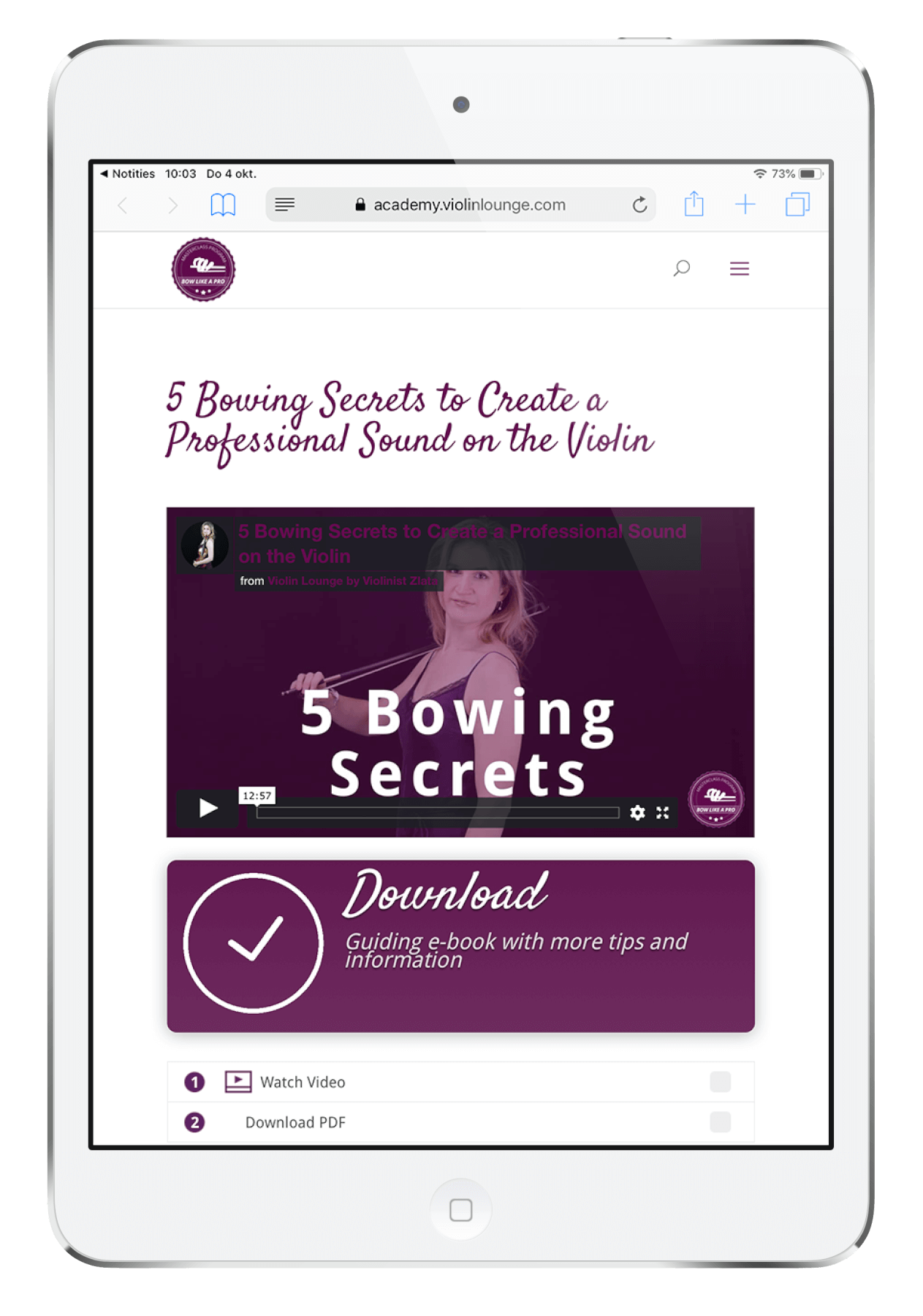5 Steps to Apply SMOOTH BOWING to your Violin Repertoire | Violin Lounge TV #421
Doing some bowing exercises, but are they not helping when playing pieces?
Here are the steps to apply smooth bowing to the music you play and set the foundation for more advanced techniques:
Here’s a problem that I see lots of students struggle with and perhaps you recognize it:
You’re doing exercises for smooth bowing or vibrato and they’re going fairly well. You have the idea that you can do it, but… as soon as you start playing music, it’s so hard to apply this new technique.
What I mean is that it’s hard to bridge the gap between a technique and the music
This can be very annoying, because we practice technique to make beautiful music, right? This video gives you some practice steps to bridge that gap.
Is this helpful? Support my work by sharing it on Twitter!
Improve your violin bowing technique
Enjoy my FREE mini Masterclass 5 Bowing Secrets to Create a Professional Sound on the Violin

Hi! I'm Zlata
Classical violinist helping you overcome technical struggles and play with feeling by improving your bow technique.
Here are the steps to bridge the gap between technique and music:
#0 be your own teacher
and know when it’s time to go back. This saves you time in the long run. This applies when you have a teacher and when you’re self learning. All violinists spend the majority of the time practicing alone and correctly yourself is crucial.
#1 Do the correct movements in simple exercises with a pencil or on the balance point of the bow
First you must make it easier to learn the new technique.
#2 Do the correct movements while bowing on open strings
Not having to worry about the left hand will leave full focus on the bowing.
#3 Apply it in slow scales
Scales are the laboratory for technique, remember?
#4 Apply it in etudes
Etudes form an ideal bridge between technique and repertoire.
#5 Apply it in repertoire
While your focus is on the music and not on the bowing. It should be automatic, relaxed, fluent… this takes months.


0 Comments